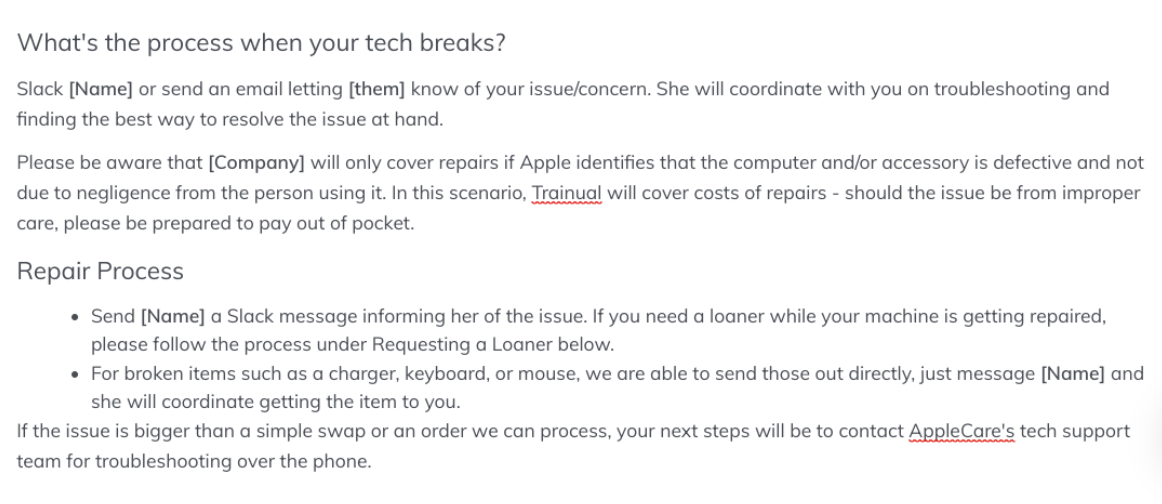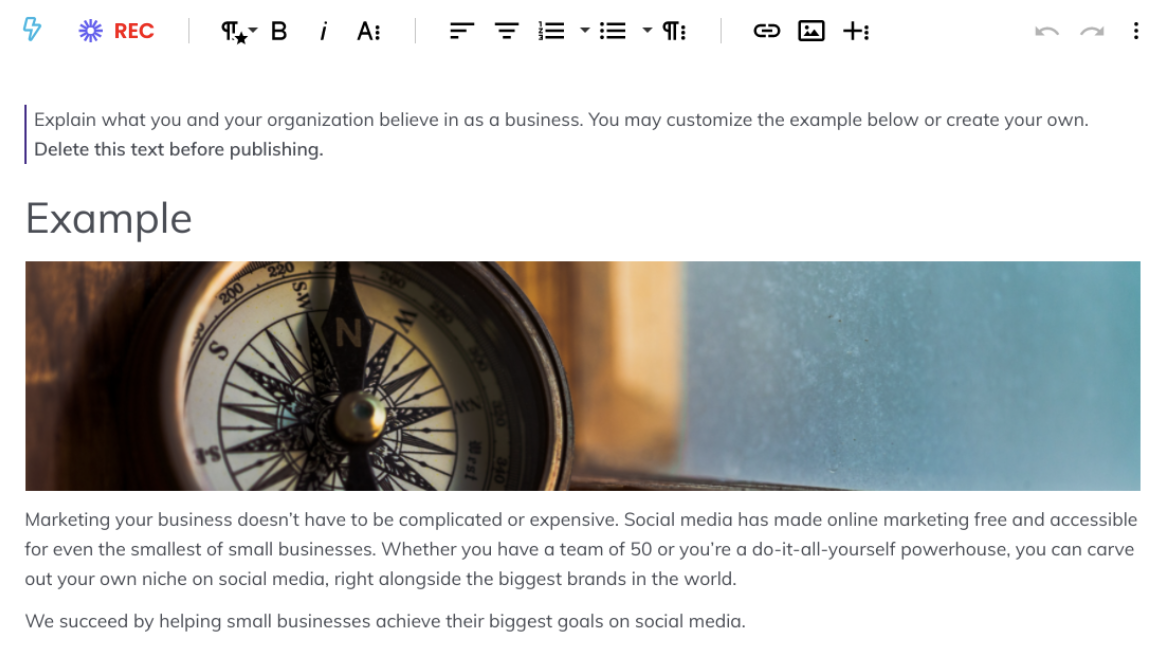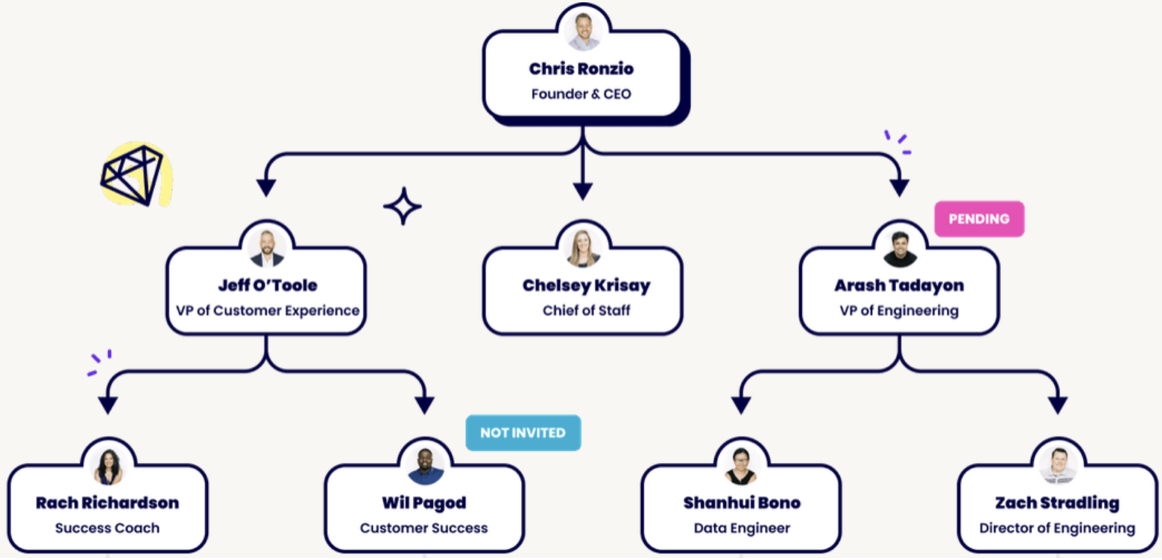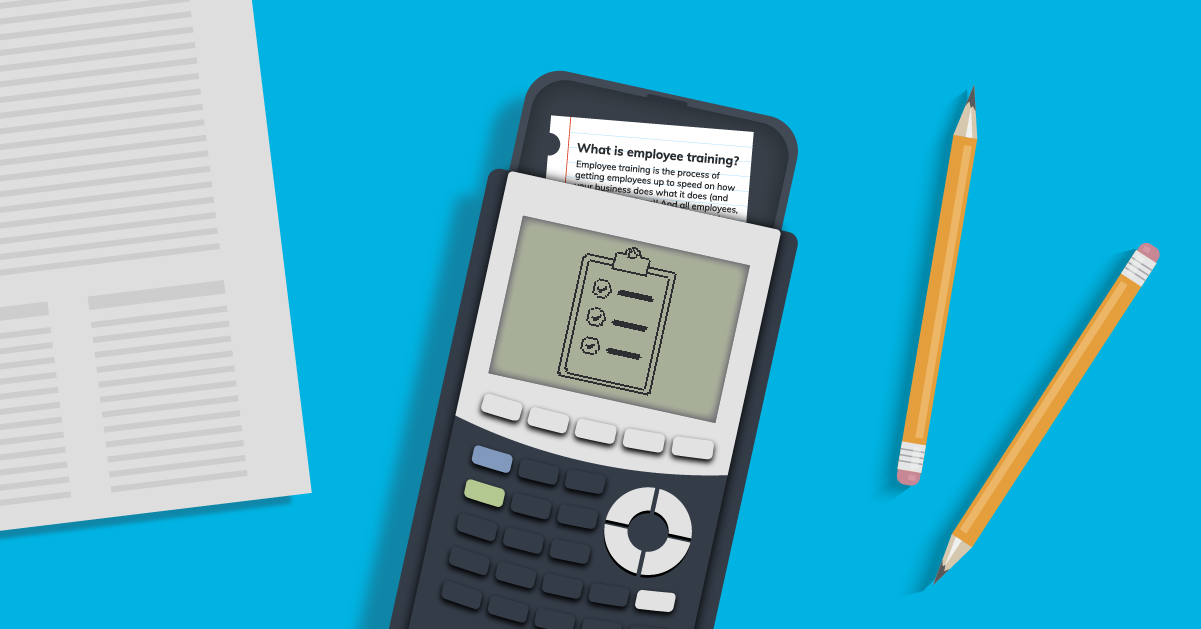
Articles
Guide: Building an Employee Handbook (Including Images, Templates, and Examples)
May 12, 2022

Tired of fielding basic questions from your employees about policies and procedures? Or answering emails about who should report to who? An employee handbook that’s both accessible and available online could be the answer to your time management problems.
If you’re not sure how to go about planning, executing, or delivering an employee manual to your entire company, sit tight. Our guide will take you through the pre-planning, creating, and delivery stages of the process. You’ll also find examples and templates to make the process as smooth and seamless as possible.
Our guide to creating an employee handbook: What you’ll learn
Our beginner’s guide to creating an employee handbook will cover all of the bases, so you can hit the ground running. We’ll take a deep dive into the following areas:
- How an employee handbook benefits your team.
- A list of the must-have items to include in your handbook.
- A step-by-step guide that will carry you through the planning, crafting, and delivery phases.
The importance of a clear and accessible handbook
Think of your employee handbook as your company playbook. It houses all of your must-knows and nice-to-knows in one place. And making it as clear and accessible as possible should be a top priority. That’s because you, your team, and your bottom line will reap the benefits.
They save time, money, and other resources.
When your team has what they need when they need it, they’re bound to be more efficient and productive. An employee handbook should harbor your company’s mission, who does what (and how to contact them), what the policies, processes, and SOPs are, and more.
When we refer to an employee handbook (or business playbook), we don’t necessarily mean the four-inch-thick clunker of a book that hasn’t been updated in a decade.
With remote employment on the rise (and many employees living in different states or even countries), it’s much more efficient to forego the paper manuals of the past in favor of a more accessible digital version.
They increase employee accountability and performance.
Every business wants its employees to perform at peak levels. It’s much easier to achieve that when they know exactly what’s expected of them and who to contact if they run into a roadblock along the way.
By creating an online, trackable employee playbook, you’ll have accountability capabilities and data at your fingertips, including:
- Quizzes or tests to track your employees’ understanding of a policy, process, or standard operating procedure (SOP).
- Who has read what and when?
- Time spent reading the information.
- Employee feedback.
Access to metrics that show how your employees interact with and respond to your company playbook is invaluable.
It will allow you to make adjustments, if necessary, and tailor training and development to each employee’s needs. It can also give you insights into what concepts they’re grasping and what they’re struggling with, which could be relevant if they’re underperforming.
What you need to include in your employee handbook
This list is meant to help you get started and isn’t comprehensive by any means. So, use this as a jumping-off point, and feel free to delete or add as necessary:
- Policies, processes, and SOPs.
- Company history.
- Mission and vision.
- A value statement.
- Salary, payment methods, and promotions.
- Benefits package.
- Code of employee conduct.
- Employee training and development plan.
- Diversity and inclusion policy.
- Equal opportunity employment, non-discrimination policies, and other federal or state policy mandates.
- Offboarding.
Steps to creating your employee handbook
Step 1: Gather, organize, and amend your company policies and procedures.
Building your new employee handbook can be an overwhelming process — at first. You may very well have hundreds or even thousands of policies, processes, and SOPs to gather before you can begin.
And if you haven’t officially updated your policies to reflect your current practices, that may take some time — but it’s necessary.
You might find that you need to create a few policies — perhaps around social media use or whether dogs are allowed in the office. If you’re not sure how to begin crafting those, or if you need to revamp some of your policies, then a template could help.
Once you have all of your policies, processes, and procedures ready, you’ll want to start thinking about the best place to publish them and make them available to your employees online.
Step 2: Choose your templates and how you want to make your handbook available.
We recommend using online software that will make the experience as stress-free as possible.
The more user-friendly, the better. Building an employee playbook is more than just listing your policies and SOPs and hoping everyone will read the manual until the end. The playbook is an opportunity for you to put your company on display, too.
But if you’re not sure how to write certain policies, or if you know you need to change a few of them, try using these templates to help you craft your handbook. They can save you time — and a headache or two.
Templates for company policies
Diversity and Inclusion
Your diversity and inclusion (D&I) policy will play a major role in determining the safety and security of your current and future employees. It'll also show your employees what you value most, as D&I policies are a strong reflection of your company culture.
Before writing your diversity and inclusion policy, you’ll want to take your time thinking about and reflecting on what it means for you and your employees to feel safe and bring their full selves to work. Then, how your company plans to create that environment.
Here’s an example of a D&I policy you can use (along with a handy free template) as an illustrative example before crafting your own:

You’ll want to make sure you are as clear as possible about what will happen, and how your company will act if an employee violates this policy. You’ll need to be succinct without leaving room for interpretation. Here’s an example of how we achieved this:
"We will take action against any employee found guilty of discrimination or harassment based on protected characteristics (such as age, gender, pregnancy, abilities, sexual orientation, religion, nationality, race, and ethnicity), up to and including termination of employment. We have zero-tolerance for discrimination and harassment at Trainual."
COVID and Office Safety
Another policy you might need to include is a COVID-oriented health and safety policy. Before creating this policy, it would be beneficial to take a look at the Center for Disease Control’s (CDC’s) guidelines as well as OSHA’s guidance.
In the following example, you get a strong feel for the company’s style, brand, and culture — even with a policy as serious as COVID and workplace safety. (Also, here’s a free template to get you started.)

Tech Troubleshooting
Nothing can slow down an employee’s efficiency and performance quite like a tech issue. The faster they know who to contact and how to resolve it, the better. Create a clear policy that gives them the who, what, where, and how they need to get up and running again. Here’s a sample template (along with an illustrative sample below) to model your policy after:

Step 3: Define your company’s mission and showcase your company culture.
Think of your company handbook as an opportunity to put your company culture on display. A newly-onboarded remote employee, for example, may rely heavily on this to get a strong sense of your company values. You’ll want to ensure your company’s mission statement reflects what you value the most.
Take a look at the following example (and this free template to get you started):

Step 4: Create your organizational/hierarchy chart.

Whether your employees work in the office or remotely, everyone needs a clear understanding of which colleague does what and how to best contact them if necessary.
Including an organizational/hierarchy chart in your employee playbook will offer an easy-to-follow visual representation of each member of your team and who falls where in that hierarchy.
As you begin creating your chart, here are a few items to consider including:
- Current picture of each team member.
- Each employee’s name and title.
- A template that shows an easy-to-follow hierarchy.
Step 5: Think about how you want to present the information.
We don’t know about you, but the thought of thumbing through (or scrolling through) hundreds of pages of dense text outlining policies and procedures sounds, well, boring.
In addition to creating a clear and concise handbook, you’ll also want to make it interesting and engaging. Think of it this way — building an employee playbook with more than just text is a great way to put your company culture on display. Your ability to incorporate multimedia (along with other modalities) to engage your employees will depend on which software you choose to build your employee playbook.
So, if you build your employee handbook using our business playbook software, you’ll have access to quick embeds.
Worried that you’re not quite tech-savvy enough to implement this? You don’t have to be. A quick embed will allow you to easily include videos, photos, and rich media. It’s also supported by hundreds of services including:
- YouTube.
- Google Slides.
- Yelp.
- Vimeo.
- Flickr.
- Slideshare.
- And many more.
Step 7: Keep your handbook accessible and up-to-date.
It’s worth emphasizing that your employee handbook will never really be complete. Your company’s evolving. You’ll figure out ways to redefine policies, processes, and SOPs that work best for your team (and your bottom line).
Once you’ve constructed your handbook, the heavy lifting’s over. Updates, amendments, deletions, and additions will happen. It’s inevitable.
The important thing is to keep it updated. Don’t let processes change without also amending your playbook. One of the main purposes of a handbook is to keep the team informed of all policies and processes, along with any updates made over time.
Ready to get your employees aligned with a company playbook?
No matter where your employees live and work, giving them easy access to the latest policies and procedures is an ideal way to get everyone up to speed (and aligned) faster. It can also help your company scale quicker. Constructing a company playbook will help you do all of that (and a lot more).
It doesn’t have to be a painful, time-consuming process, either. With the right handbook-building software you can store and amend all of your policies, processes, and SOPs in a single platform. You’ll also be able to track what everyone’s reading, where they are in their training and development, and hold them accountable to ensure they’re learning what they need to benefit them in their role.
Times, they are a-changin'. A physical employee handbook isn’t practical, easily accessible, or an effective way of providing your employees with what they must know. A company playbook, on the other hand, can deliver, saving you time and money.
Similar Blog Posts










